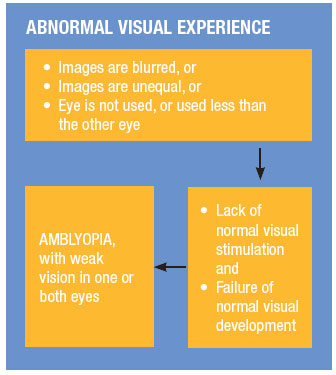Effective Treatment for Lazy Eyes (Amblyopia) in Children
07 May 2019
What is “Lazy Eye’’ or Amblyopia?
This is what should normally happen during the critical period of development in early childhood: both eyes receive clear and equally sharp images, stimulating normal maturation of the part of the brain for vision. This enables the child to develop normal vision and see clearly.
When a child does not receive clear and equal images in both eyes, or does not use both eyes equally, the nerves for vision cannot develop normally; this leads to weak vision in one or both eyes. Weak vision from failure of normal visual maturation is known as amblyopia.

Understand the Causes of Amblyopia (Lazy Eye)
- Blocked vision, e.g. congenital cataract, droopy eyelid (ptosis)
- Blurred images or unequal images, e.g., high and/or unequal refractive errors (short-sight, long-sight, astigmatism)
- Lack of use of one eye, e.g., squint (strabismus, ‘cock-eye’)

The Importance of Early Detection and Treatment for Amblyopia
It needs to be detected and treated early for treatment to be effective. The window period for effective treatment may be as short as just the first few months of life (e.g., for congenital cataract) or up to about 8 years old (e.g., for some squints).
-
It is an important cause of permanently weak vision among children and adults, mainly because it is detected too late. After the process of visual development stops at about 8 years old, treatment – lenses, exercises, medications, surgery, laser – have generally no effect.
Firstly, the underlying cause of the amblyopia must be corrected as far as possible. Treatment may include using eye drop medications, glasses, patching of the stronger eye in order to work the weak eye, or surgery.
How to Monitor and Support Your Child's Vision?
- Ensure that your pre-verbal child is screened at every well-baby visit for age-appropriate visual response and a normal appearance of the eyes (for instance, there should be no abnormal opacities such as cataract).
- Consult an eye doctor as soon as possible if you notice anything unusual in your child’s visual response or in the appearance of the eyes – no child is too young to be checked.
- Take your child for a routine vision test before entering pre-school, or at about 4 years old.
- Do not give your child supplements and vitamins to try and strengthen his or her vision as these not only do not work, but also may possibly be harmful.






